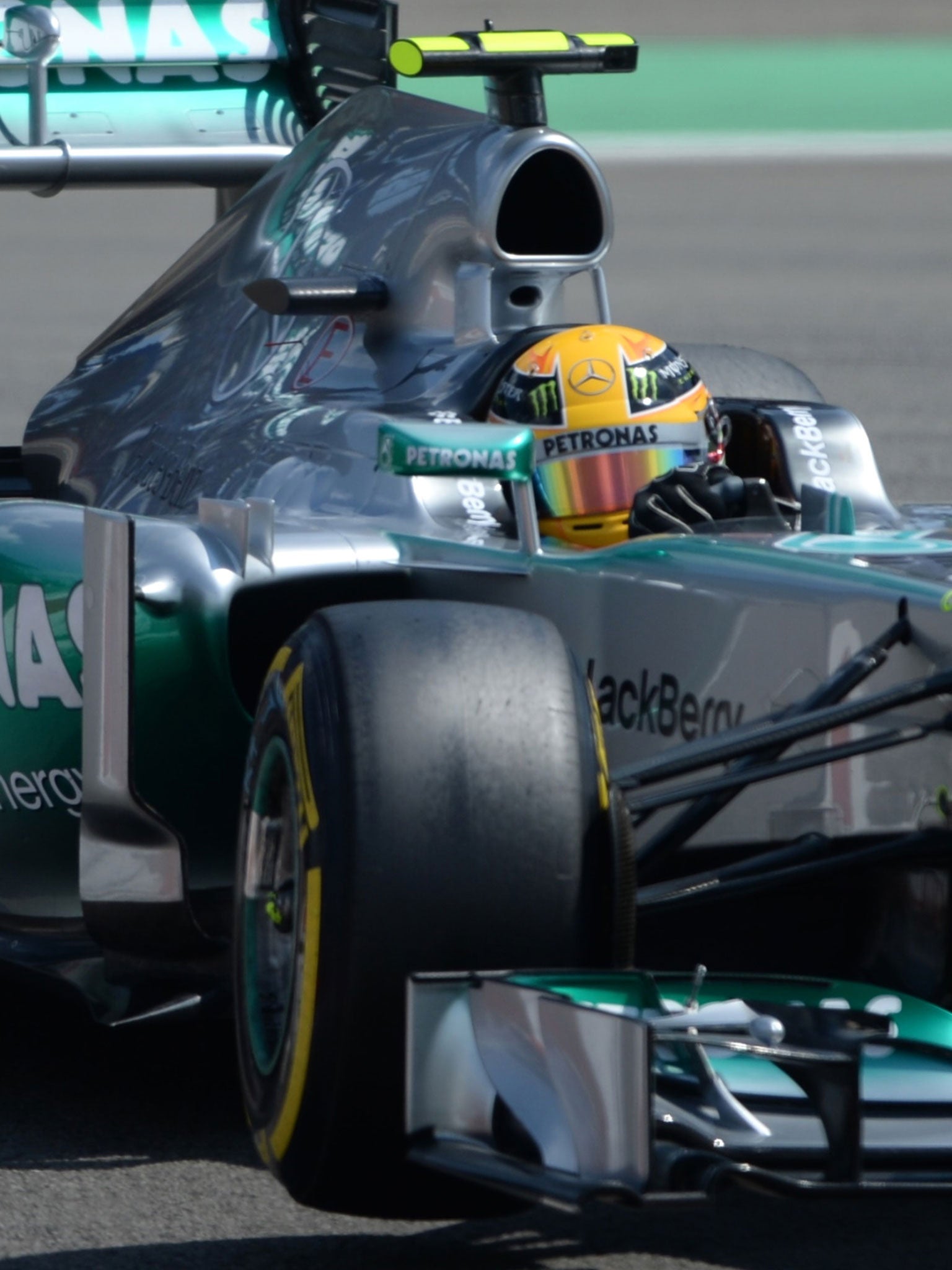Lewis Hamilton beats 'disasters' to snatch pole from Sebastian Vettel in Germany

Lewis Hamilton stands his best chance of winning a race for his new Mercedes team after beating local hero Sebastian Vettel in a tense fight to secure pole position for today's German Grand Prix here.
But this was no easy success yesterday. First Hamilton had struggled with the set-up of his car, and then Mercedes misjudged the evolution of the track's grip during the second qualifying session, so that British GP winner, Nico Rosberg, was in the pits during a flurry of late improvements and thus got bumped out of the third session which decides the top 10.
The performance of Pirelli's revised tyres has removed much of the spectre of Silverstone that hung over the start of the weekend, when the Grand Prix Drivers' Association said that any repeat of the explosive punctures that were such a feature of the British GP last Sunday would prompt them to withdraw from the race.
Vettel, a director of the GPDA, outlined how the drivers felt after two days without any sign of trouble following the introduction by Pirelli of tyres with Kevlar belts instead of steel, and the mandated limits for tyre pressures and suspension camber angles.
"We are confident that we won't have problems," he said, "but if we do it's difficult for us inside cars to know exactly what's going on, so Charlie [race director Charlie Whiting] is the one to decide and we all had a good chat with him on Friday. I think we should be well prepared for the race. But, again, I don't expect any problems."
Hamilton's fluid performance was a reminder of a talent often disguised by his machinery since his title success in 2008, but it took a lot of effort. "I tell you, it's really overwhelming," he said of his 29th pole. "I've been struggling since I was fastest on that first run in FP1. FP2 and FP3 were disasters and it actually got worse this morning. I wasn't comfortable at all in the car, so I went into the truck with the engineers and we worked hard looking at changes.
"Fortunately I then was able to do the times that we did this afternoon, so I'm grateful to the guys. This is all down to them." He admitted that the changing track conditions were a big surprise, and that Rosberg had been in such strong form all weekend that he had expected to be out-qualified by him.
Vettel and Webber, meanwhile, said they had got everything they could out of their Red Bulls, but they will be strong in the race and so will the Lotuses, which were fourth and fifth, and the Ferraris, which qualified on the more durable medium tyres. It could be one of the most open races for a while.
The tyre debate: All change to avoid further blowouts
So are there going to any more spectacular punctures this week?
Hopefully not. Pirelli have brought new tyres and issued fresh guidance to the teams, enforced by the governing body, the FIA.
What's new about the tyres?
They are the same compounds that we saw earlier this year, in this case the medium and soft, but the tyres now have a stronger Kevlar belt to hold the construction together instead of the previous steel belt.
Aren't these the tyres that were supposed to have been used in Canada and from the British GP onwards, in reaction to previous blowouts due to delamination?
Yes. They did appear in Canada, but were not used after the first practice session because the weather did not allow teams to gather sufficient information on them.
Why weren't they used at the British Grand Prix at Silverstone?
Because Ferrari, Lotus and Force India, the three teams who have arguably done the best job managing tyre degradation this year, did not agree to it as they didn't want to see their advantage eroded.
What else has been changed?
On Pirelli's recommendation, following a very detailed analysis of the failures at Silverstone, teams must run the uni-directional tyres in the direction of rotation specified by Pirelli (i.e. on the correct side of the car). Camber angles (the [negative] angle of the wheel to the ground which makes it lean in at the top to generate more grip) must not exceed 4 degrees at the front and 2.5 at the rear, and there is a minimum tyre pressure of 16 psi.
Why on earth would you run tyres the wrong way round?
It sounds crazy, especially as the outer edge of the tyre is stronger to withstand cornering forces, but in the quest to manage tyre degradation some teams discovered that turning the tyres round actually improves wear. It's an old karting trick, but F1 tyres are much more complex than kart tyres, and with the very high loadings experienced at Silverstone, allied to camber angles as great as 4 degrees at the rear and tyre pressures as low as 14 psi, some teams found themselves in trouble.
David Tremayne
Join our commenting forum
Join thought-provoking conversations, follow other Independent readers and see their replies
Comments